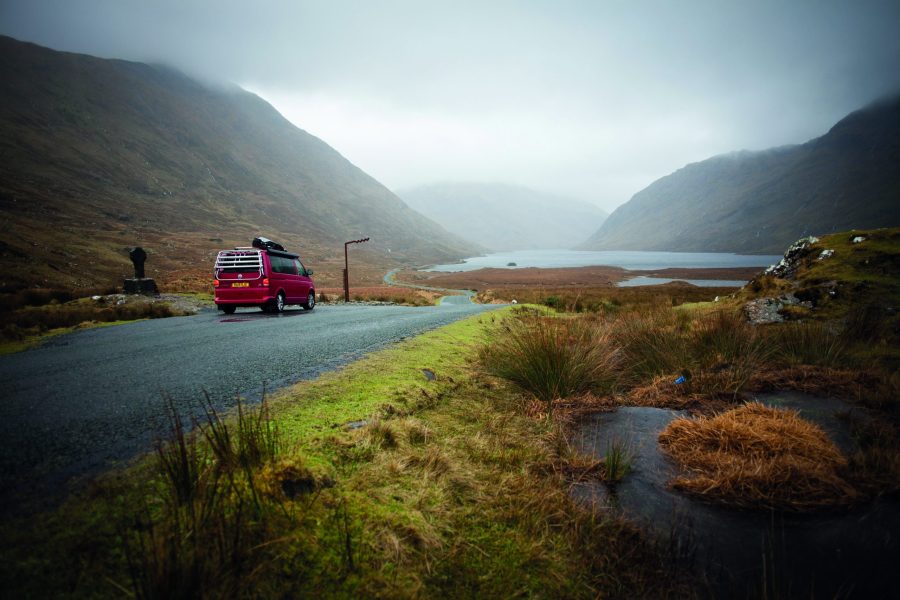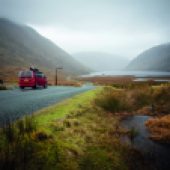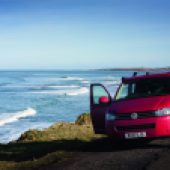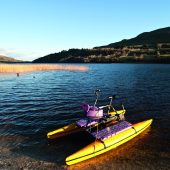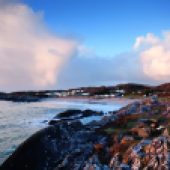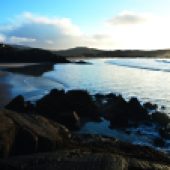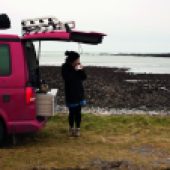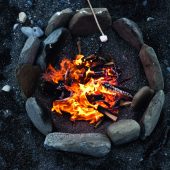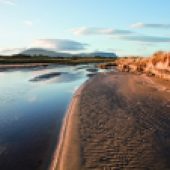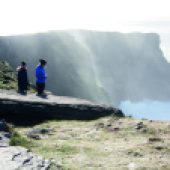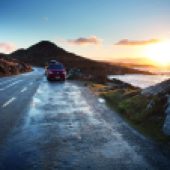Ireland’s Wild Atlantic Way is one of the most spectacular waymarked driving routes in the world. Martin Dorey takes his family on a campervan holiday to cherish – climbing mountains, watching dolphins, and toasting marshmallows on quiet beaches
Words and Photographs MARTIN DOREY
A weather window of bright sunshine shakes us into action a few days into our family trip along the 1,600-mile long Wild Atlantic Way. This waymarked route is the aptly named, Atlantic-facing west coast of Ireland where, in places, waves can reach as high as a house. Aboard our scarlet VW T5 campervan we have arrived in County Sligo, a couple of hundred miles south from the start of the Way in Muff, County Donegal. With the sun in view, I wheedle at my two teenage daughters: ‘If we climb Knocknarea Mountain today to visit Queen Maeve’s tomb, then you won’t have to go barefoot up Croagh Patrick.’
My reason? Knocknarea, four miles from Sligo town on the Coolera Peninsula, is a mere 327m high, whereas the sacred peak of Croagh Patrick in County Mayo, which is further down the route, is a towering 762m in height and the place where devoted souls make pilgrimage every year by climbing it without any shoes, whatever the weather. A deal is swiftly struck and we head into Strandhill, a tiny but buzzing seaside-and-surf village
at the end of the Coolera Peninsula close to Knocknarea Mountain.

After a pit-stop for hot chocolate we schlep up to Maeve’s tomb, a 10m-high cairn on top of the mountain, and discover why it’s a great place to start exploring this part of the Wild Atlantic Way. The vistas are, for want of
a better word, staggering. To the north, across Donegal Bay, lie the Slieve League Mountains. To the west, across Sligo Bay, are Easkey, Aughris Head and far distant County Mayo. Below us are the reefs, points and surf at Strandhill Beach. It’s no wonder the ancient kings and queens of Connacht were crowned here – from here they could survey all the horizons of their realm.
SEAWEED AND SURPRISES
The west coast of Ireland takes all sorts of weather on the chin and is the reason to make the most of sunny days. Things can change very quickly at the edge of northern Europe: it’s unpredictable, wild, untamed and astonishingly beautiful. A land of ancient sites, frightening cliffs, jaunty seaside towns and more beautiful stretches of coastal road than is decent.
After scaling the heights of Knocknarea Mountain we visit the traditional Voya Seaweed Baths at Strandhill, one of a few seaweed centres dotted along the west coast. Here you can bathe in hot seawater and serrated wrack seaweed before taking a steam bath, showering off in cold water then doing it all over again. Soaked in hot salt water the seaweed excretes mineral-rich enzymes that make your skin feel silky, smooth and glowing. At Voya, you can check into a family room with two baths and two steam rooms for 50 minutes for around €60. We and the children love it.
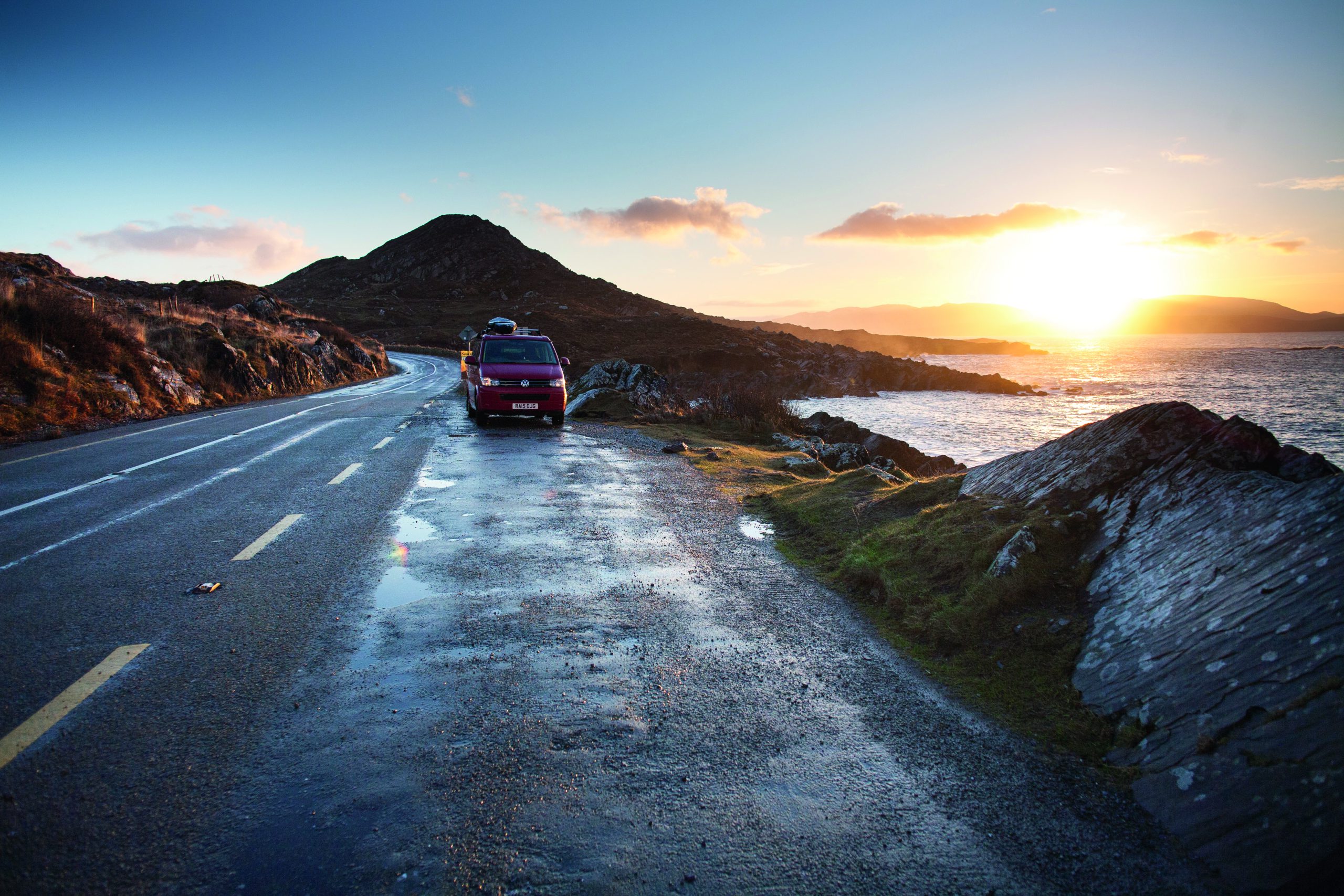
Feeling relaxed after our seaweed soak, we head back to our rented house in Mullaghmore Harbour, on Sligo’s Mullaghmore Peninsula, famous for its superb surfing. The village of Mullaghmore is cheery and colourful and has one of Ireland’s best seafood restaurants, Eithna’s By The Sea. In the summer you can eat well on local seafood in the restaurant or just enjoy a coffee as you watch the comings and goings on the harbour side. You may even catch sight of Prannie Rhatigan, the enigmatic author of The Irish Seaweed Kitchen, taking seaweed foraging and cooking courses here. You can’t miss Eithna’s – the restaurant is brightly painted with a beautiful mural by Donegal artist Barry Sweeny.
With light left in the day we decide to take a detour and visit Glencar Waterfall, a famous spot just inland. Reader, we never make it, as we are distracted by someone pedalling something across Glencar Lough. As we edge closer we can see that it is actually a hydrobike. The owner explains that he uses it to retrieve lost model seaplanes that he flies over the lough. Despite claiming it costs €50 an hour to rent, he lets me have a go for free.
STUPENDOUS VISTAS
On day three the good weather spell breaks. But before it goes completely, we explore rugged Lissadell Beach, eight miles north of Sligo town, build a camp fire and toast marshmallows. Despite our best efforts to keep cheery, the rain finally comes in, which means heading south for Connemara and our next stop, Clifden. Along the way we get out of the van to pay our respects at the National Famine Memorial at County Mayo, a haunting bronze sculpture of a boat of souls, and hurry along. Despite apocalyptic rain the journey is still beautiful. When the downpour ceases we take the ‘Sky Road’ out of Clifden and, as expected, the views towards Inishturk and Turbot islands are nothing short of spectacular. We stop to take in the landscape and notice a pod of dolphins in the bay below. As if on cue they start breaching and jumping.

Southwards we continue, through the surreal limestone landscape of The Burren, a hotspot for orchids and wildflowers, and on to Lahinch via a delicious seafood chowder lunch at the quaint village of Doolin. This is often
the starting point for a visit to the fearsome Cliffs of Moher, Ireland’s most visited natural attraction. Each year a million visitors come in cars and coaches to gawp at the sheer drops here. You can understand why – the cliffs are 700ft tall and five miles wide and are absolutely terrifying. I’m all up for giving them a miss until we pass a little homemade sign (just after the main visitor centre) to parking. We wind up at the southern end of the cliffs in someone’s front garden, an entrepreneur charging €2 to park. From there it’s a kilometre walk to the Cliffs of Moher with few other people around, and certainly no tourist buses. We peer over the edge as seabirds fly around and sea mist rises up from the Atlantic far below.
BLESSED BY A RAINBOW
From here we head further south still to The Ring of Kerry on Iveragh Peninsula, and Sneem on County Kerry’s south coast. I get up early to drive out to the end of the road, at Caherdaniel and the beach at Derrynane. With white sand and blue water, it’s one of my favourite beaches, so I wanted to make a special pilgrimage and grab some pictures in the early morning light. I walk across a sandy causeway at the beach’s western end to a ruined chapel. As an added bonus a rainbow arcs across the seaward side of the bay. Perfect.
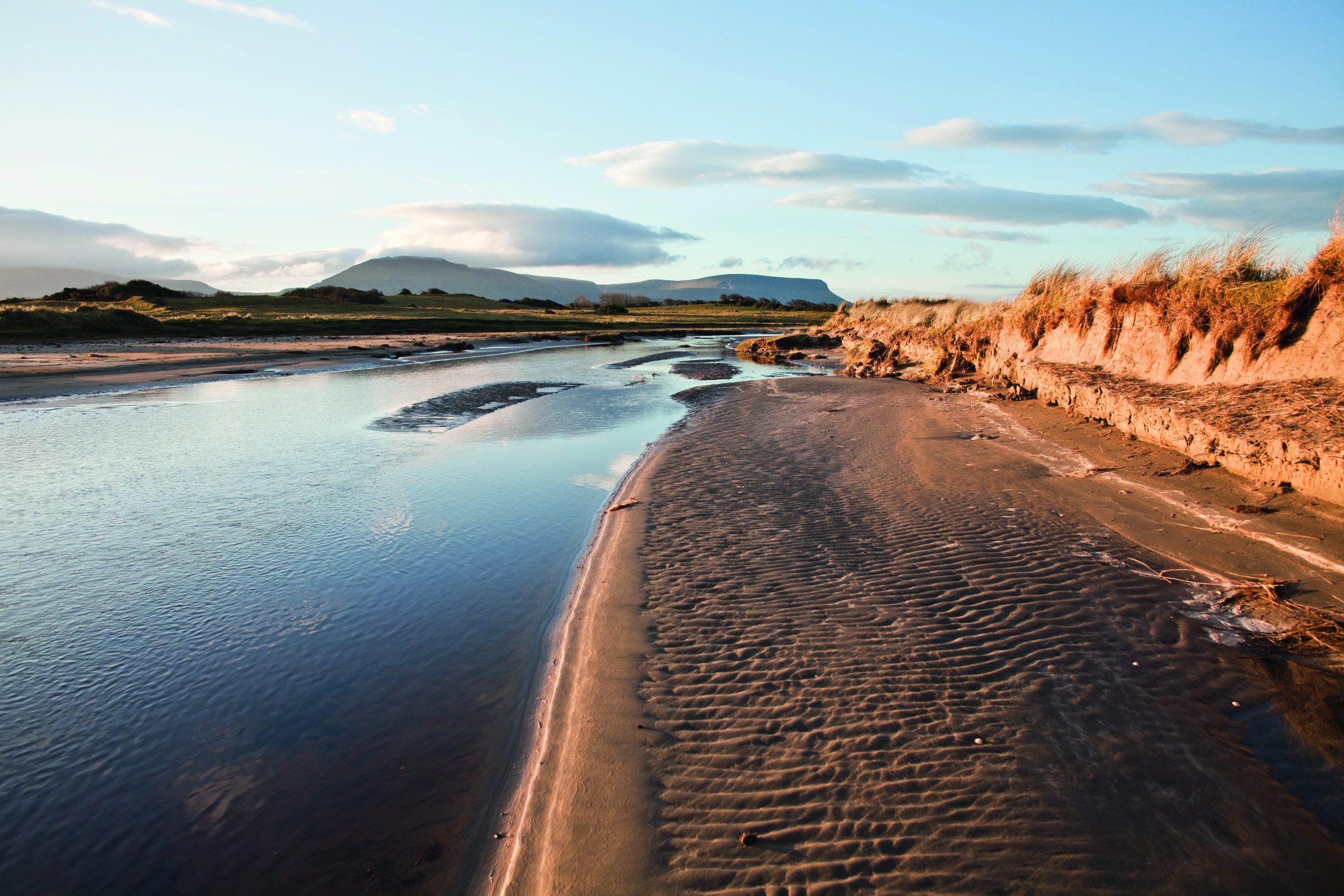
On our final day, it’s homeward bound for my wife, Joanne. She was raised in Dungarvan, a small but lively town in County Waterford, to the east of Cork City. On the way we stop to meet an old friend, Andrew Malcolm, to spend a couple of hours dolphin spotting. We meet him on the beach at Ardmore where he was doing a survey of a recently washed up common dolphin that was a victim of bycatch. He teaches the kids how to determine the sex, measure and take skin samples from the dolphin. It’s not pleasant but it’s an important part of our kids’ marine education and demonstrates why buying dolphin-friendly products is so important. Andrew regularly takes visitors up to Ardmore Head to watch dolphins and forage for coastal plants. But really it’s just an excuse to sit quietly on a cliff top and enjoy the sea, the salty air and the wind. We don’t spend enough time looking out to sea sometimes, and this is an ideal opportunity to do just that. The girls see a pod of porpoises but I’m too busy taking pictures. The shots are nice but there’s a lesson in there somewhere: open your eyes. There’s always something to surprise you on the Wild Atlantic Way.
For more travel inspiration, head to our Places section, or pick up a copy of Coast
PLANNING A TRIP TO THE WILD ATLANTIC WAY
The Wild Atlantic Way is a 1,600-mile waymarked route from Muff in the northwestern county of Donegal to Kinsale in County Cork. Most of the route follows Ireland’s roads on the west coast, but where it can’t there are waymarked detours. The Irish tourist board – Fáilte Ireland – provides maps, itineraries and guidance at wildatlanticway.com. And for information about accommodation and sightseeing ideas, go to ireland.com.
HOW TO GET THERE
We travelled to Ireland with the helpful and accommodating Irish Ferries from Holyhead to Dublin, returning from Rosslare to Pembroke Dock. Travel times vary. Book at irishferries.com.
WHERE TO STAY
Courtesy of Fáilte Ireland we stayed at The Clifden Station House in County Galway (+353 95 21699; clifdenstationhouse.com), and The Sneem Hotel in County Kerry (+353 064 6675100; sneemhotel.com).
When you are campervanning it’s nice to get a wash and brush up every once in a while! The Clifden Station House has a pool and spa, while there are seaweed baths at Bundoran, Enniscrone, Strandhill, Leenane, and Ballybunion. See seaweed.ie/baths for a full list.
For campsites all along the Wild Atlantic Way, see campsited.com. There are ‘aires de camping car’, which provide cheap overnight parking for motorhomes at Sneem, Cork, Bandon and Ardmore.
Looking for the perfect holiday right at the water’s edge? Discover our collection of exclusive cruise trips around the British Isles here.

